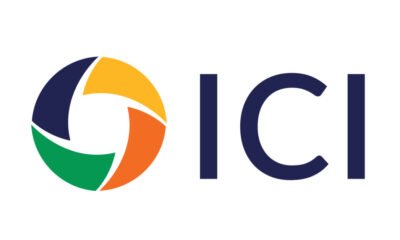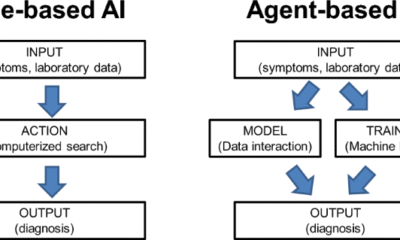Tulenko K, Møgedal S, Afzal M, Frymus D, Oshin A, Pate M, et al. Community health workers for universal health-care coverage: From fragmentation to synergy. Bull World Health Organ. 2013;91:847–52.
Article
PubMed
PubMed Central
Google Scholar
WHO. WHO guideline on health policy and system support to optimize community health worker programmes. Geneva: World Health Organization; 2018.
Google Scholar
WHO. The world health report 2008: primary health care now more than ever. Geneva: World Health Organization; 2008.
Google Scholar
Scott K, Beckham S, Gross M, Pariyo G, Rao K, Cometto G, et al. What do we know about community-based health programs? A systematic review of existing reviews on community health workers and their integration with health systems. Hum Resour Health. 2018;16:39.
Article
PubMed
PubMed Central
Google Scholar
Cometto G, Ford N, Pfaffman-Zambruni J, Akl EA, Lehmann U, McPake B, et al. Health policy and system support to optimise community health worker programmes: an abridged WHO guideline. Lancet Glob Health. 2018;6:e1397–404 Elsevier Ltd.
Article
PubMed
Google Scholar
McCollum R, Gomez W, Theobald S, Taegtmeyer M. How equitable are community health worker programmes and which programme features influence equity of community health worker services? A systematic review. BMC Public Health. 2016;16(1):1–16.
Article
Google Scholar
Blanchard AK, Prost A, Houweling TAJJ. Effects of community health worker interventions on socioeconomic inequities in maternal and newborn health in low-income and middle-income countries: A mixed-methods systematic review. BMJ Glob Health. 2019;4(3):1–11.
Article
Google Scholar
Barnett ML, Gonzalez A, Miranda J, Chavira DA, Lau AS. Mobilizing community health workers to address mental health disparities for underserved populations: A systematic review. Adm Policy Ment Health Ment Health Serv Res. 2018;45(2):195–211.
Article
Google Scholar
World Health Organization. Handbook on health inequality monitoring. Geneva: World Health Organization; 2013.
Google Scholar
O’Neill J, Tabish H, Welch V, Petticrew M, Pottie K, Clarke M, et al. Applying an equity lens to interventions: Using PROGRESS ensures consideration of socially stratifying factors to illuminate inequities in health. J Clin Epidemiol. 2014;67(1):56–64.
Article
PubMed
Google Scholar
Welch V, Petticrew M, Tugwell P, Moher D, O’Neill J, Waters E, et al. PRISMA-equity 2012 extension: Reporting guidelines for systematic reviews with a focus on health equity. PLoS Med. 2012;9(10):e1001333.
Article
PubMed
PubMed Central
Google Scholar
Welch VA, Petticrew M, O’Neill J, Waters E, Armstrong R, Bhutta ZA, et al. Health equity: Evidence synthesis and knowledge translation methods. Syst Rev. 2013;2(1):43.
Article
PubMed
PubMed Central
Google Scholar
Belur J, Tompson L, Thornton A, Simon M. Interrater reliability in systematic review methodology: Exploring variation in coder decision-making. Sociol Methods Res. 2018;50(2):837–65.
Article
Google Scholar
Higgins JPT, Savović J, Page MJ, Elbers RG, Sterne JAC. Assessing risk of bias in a randomized trial. In: Higgins J, Thomas J, Chandler J, M C, Li T, Page M, et al., editors. Cochrane handbook for systematic reviews of interventions version 60; 2019.
Chapter
Google Scholar
Dixon-Woods M, Sutton AJ, Shaw RL. Appraising qualitative research for inclusion in systematic reviews: A quantitative and qualitative comparison of three methods. J Heal Serv Res Policy. 2007;12(1):42–7.
Article
Google Scholar
Pollard TM, Guell C, Morris S. Communal therapeutic mobility in group walking: A meta-ethnography. Soc Sci Med. 262:113241.
Popay J, Roberts H, Sowden A, Petticrew M, Arai L, Rodgers M, et al. Guidance on the conduct of narrative synthesis in systematic reviews: A product from the ESRC methods programme 2006;(January 2006):1–92.
Borenstein M, Hedges LV, Higgins JPT, Rothstein HR. Introduction to meta-analysis. Chichester: Wiley; 2011.
Google Scholar
Piggot T. Advances in meta-analysis. New York: Springer Science & Business Media; 2012.
Book
Google Scholar
Hedges LV, Olkin I. Statistical methods for meta-analysis. Orlando: Academic Press; 1985.
Google Scholar
Vilms RJ, McDougal L, Atmavilas Y, Hay K, Triplett DP, Silverman J, et al. Gender inequities in curative and preventive health care use among infants in Bihar, India. J Glob Health. 2017;7(2).
Geldsetzer P, Vaikath M, De Neve JW, Bossert TJ, Sibandze S, Mkhwanazi M, et al. Distrusting community health workers with confidential health information: A convergent mixed-methods study in Swaziland. Health Policy Plan. 2017;32(6):882–9.
Article
PubMed
Google Scholar
Manu A, Hill Z, Ten Asbroek AH, Soremekun S, Weobong B, Gyan T, et al. Increasing access to care for sick newborns: Evidence from the Ghana Newhints cluster-randomised controlled trial. BMJ Open. 2016;6(6):e008107.
Article
PubMed
PubMed Central
Google Scholar
Chudasama RK, Kadri AM, Verma PB, Patel UV, Joshi N, Zalavadiya D, et al. Evaluation of integrated child development services program in Gujarat, India. Indian Pediatr. 2014;51(9):707–11.
Article
PubMed
Google Scholar
Getnet F, Hashi A, Mohamud S, Mowlid H, Klinkenberg E. Low contribution of health extension workers in identification of persons with presumptive pulmonary tuberculosis in Ethiopian Somali region pastoralists. BMC Health Serv Res. 2017;17(1):1–9.
Article
Google Scholar
Matovu F, Nanyiti A, Rutebemberwa E. Household health care-seeking costs: Experiences from a randomized, controlled trial of community-based malaria and pneumonia treatment among under-fives in eastern Uganda. Malar J. 2014;13(1):1–6.
Article
Google Scholar
Afework MF, Admassu K, Mekonnen A, Hagos S, Asegid M, Ahmed S. Effect of an innovative community based health program on maternal health service utilization in north and south Central Ethiopia: A community based cross sectional study. Reprod Health 2014;11(1):1–9.
Agarwal S, Curtis SL, Angeles G, Speizer IS, Singh K, Thomas JC. The impact of India’s accredited social health activist (ASHA) program on the utilization of maternity services: A nationally representative longitudinal modelling study. Hum Resour Health. 2019;17(1):1–13.
Article
Google Scholar
Ashenafi A, Karim AM, Ameha A, Erbo A, Getachew N, Betemariam W. Effect of the health extension program and other accessibility factors on care-seeking behaviors for common childhood illnesses in rural Ethiopia. Ethiop Med J. 2014;52(Suppl 3):57–64.
PubMed
Google Scholar
Shaw B, Amouzou A, Miller NP, Tsui AO, Bryce J, Tafesse M, et al. Determinants of utilization of health extension workers in the context of scale-up of integrated community case management of childhood illnesses in Ethiopia. Am J Trop Med Hyg. 2015;93(3):636–47.
Article
PubMed
PubMed Central
Google Scholar
Miyaguchi M, Yasuoka J, Poudyal AK, Silwal RC, Jimba M. Female community health volunteers service utilization for childhood illness- improving quality of health services only is not enough: A cross-sectional study in mid-western region, Nepal. BMC Health Serv Res. 2014;14(1):1–10.
Article
Google Scholar
Chami GF, Kontoleon AA, Bulte E, Fenwick A, Kabatereine NB, Tukahebwa EM, et al. Community-directed mass drug administration is undermined by status seeking in friendship networks and inadequate trust in health advice networks. Soc Sci Med. 2017;183:37–47.
Article
PubMed
PubMed Central
Google Scholar
Yaya Y, Data T, Lindtjørn B. Maternal mortality in rural South Ethiopia: Outcomes of community-based birth registration by health extension workers. PLoS One. 2015;10(3):1–17.
Article
CAS
Google Scholar
Naidoo N, Railton JP, Khosa SN, Matlakala N, Marincowitz G, McIntyre JA, et al. Fidelity of HIV programme implementation by community health workers in rural Mopani district, South Africa: A community survey. BMC Public Health. 2018;18(1):1099.
Article
PubMed
PubMed Central
Google Scholar
Sakeah E, Doctor HV, McCloskey L, Bernstein J, Yeboah-Antwi K, Mills S. Using the community-based health planning and services program to promote skilled delivery in rural Ghana: Socio-demographic factors that influence women utilization of skilled attendants at birth in northern Ghana. BMC Public Health. 2014;14(1):1–9.
Article
Google Scholar
Adongo PB, Phillips JF, Aikins M, Arhin DA, Schmitt M, Nwameme AU, et al. Does the design and implementation of proven innovations for delivering basic primary health care services in rural communities fit the urban setting: The case of Ghana’s Community-based Health Planning and Services (CHPS). Heal Res Policy Syst. 2014;12(1):1–10.
Google Scholar
Nwameme AU, Tabong PTN, Adongo PB. Implementing Community-based Health Planning and Services in impoverished urban communities: Health workers’ perspective. BMC Health Serv Res. 2018;18(1):1–11.
Article
Google Scholar
Mumtaz Z, Levay A, Bhatti A, Salway S. Good on paper: The gap between programme theory and real-world context in Pakistan’s Community Midwife programme. BJOG An Int J Obstet Gynaecol. 2015;122(2):249–58.
Article
CAS
Google Scholar
Elazan SJ, Higgins-Steele AE, Fotso JC, Rosenthal MH, Rout D. Reproductive, maternal, newborn, and child health in the community: Task-sharing between male and female health workers in an Indian rural context. Indian J Community Med. 2016;41(1):34–8 [cited 2021 Mar 22].
Article
PubMed
PubMed Central
Google Scholar
Fotso JC, Higgins-Steele A, Mohanty S. Male engagement as a strategy to improve utilization and community-based delivery of maternal, newborn and child health services: Evidence from an intervention in Odisha, India. BMC Health Serv Res. 2015;15(Suppl 1):1–10.
Article
Google Scholar
Asher L, Hanlon C, Birhane R, Habtamu A, Eaton J, Weiss HA, et al. Community-based rehabilitation intervention for people with schizophrenia in Ethiopia (RISE): A 12 month mixed-methods pilot study. BMC Psychiatry. 2018;18(1):1–17.
Article
Google Scholar
Baum A, Mulwafu W, Phiri M, Polack S, Bright T. An intervention to improve uptake of referrals for children with ear disease or hearing loss in Thyolo district, Malawi: Acceptability and feasibility. Int J Environ Res Public Health. 2019;16(17):1–16.
Article
Google Scholar
Dusabe-Richards JN, Tesfaye HT, Mekonnen J, Kea A, Theobald S, Datiko DG. Women health extension workers: Capacities, opportunities and challenges to use ehealth to strengthen equitable health systems in southern Ethiopia. Can J Public Heal. 2016;107(4–5):e355–61.
Article
Google Scholar
Jackson R, Tesfay FH, Godefay H, Gebrehiwot TG. Health extension workers’ and mothers’ attitudes to maternal health service utilization and acceptance in Adwa Woreda, Tigray region, Ethiopia. PLoS One. 2016;11(3):1–15.
Article
CAS
Google Scholar
Namukwaya Z, Barlow-Mosha L, Mudiope P, Kekitiinwa A, Matovu JN, Musingye E, et al. Use of peers, community lay persons and Village Health Team (VHT) members improves six-week postnatal clinic (PNC) follow-up and Early Infant HIV Diagnosis (EID) in urban and rural health units in Uganda: A one-year implementation study. BMC Health Serv Res. 2015;15(1):555.
Article
PubMed
PubMed Central
Google Scholar
Negero MG, Mitike YB, Worku AG, Abota TL. Skilled delivery service utilization and its association with the establishment of Women’s Health Development Army in Yeky district, south West Ethiopia: A multilevel analysis. BMC Res Notes 2018;11(1):1–9.
Hailemariam M, Fekadu A, Medhin G, Prince M, Hanlon C. Equitable access to mental healthcare integrated in primary care for people with severe mental disorders in rural Ethiopia: A community-based cross-sectional study. Int J Ment Heal Syst. 2019;13(1):1–10.
Google Scholar
Borg J, Ekman BO, Östergren PO. Is centre-based provision of hearing aids better than community-based provision? A cluster-randomized trial among adolescents in Bangladesh. 2018;13(6):497–503.
Fatti G, Jackson D, Goga AE, Shaikh N, Eley B, Nachega JB, et al. The effectiveness and cost-effectiveness of community-based support for adolescents receiving antiretroviral treatment: An operational research study in South Africa. J Int AIDS Soc. 2018;21:23–34.
Article
CAS
Google Scholar
Kawakatsu Y, Tanaka J, Ogawa K, Ogendo K, Honda S. Community unit performance: Factors associated with childhood diarrhea and appropriate treatment in Nyanza Province, Kenya. BMC Public Health. 2017;17(1):1–14.
Article
Google Scholar
Kawakatsu Y, Sugishita T, Oruenjo K, Wakhule S, Kibosia K, Were E, et al. Determinants of health facility utilization for childbirth in rural western Kenya: Cross-sectional study. BMC Pregnancy Childbirth. 2014;14(1):265.
Article
PubMed
PubMed Central
Google Scholar
Karanja S, Gichuki R, Igunza P, Muhula S, Ofware P, Lesiamon J, et al. Factors influencing deliveries at health facilities in a rural Maasai Community in Magadi sub-county, Kenya. BMC Pregnancy Childbirth. 2018;18(1):1–11.
Article
Google Scholar
Stollak I, Valdez M, Rivas K, Perry H. Casas maternas in the rural highlands of Guatemala: A mixed-methods case study of the introduction and utilization of birthing facilities by an indigenous population. Glob Heal Sci Pract. 2016;4(1):114–31.
Article
Google Scholar
Asiki G, Newton R, Kibirige L, Kamali A, Marions L, Smedman L. Feasibility of using smartphones by village health workers for pregnancy registration and effectiveness of mobile phone text messages on reduction of homebirths in rural Uganda. PLoS One. 2018;13(6):e0198653.
Article
PubMed
PubMed Central
CAS
Google Scholar
Jacobs C, Michelo C, Chola M, Oliphant N, Halwiindi H, Maswenyeho S, et al. Evaluation of a community-based intervention to improve maternal and neonatal health service coverage in the most rural and remote districts of Zambia. PLoS One. 2018;13(1):1–15.
Article
CAS
Google Scholar
Huq NL, Ahmed A, al Haque N, Hossaine M, Uddin J, Ahmed F, et al. Effect of an integrated maternal health intervention on skilled provider’s care for maternal health in remote rural areas of Bangladesh: A pre and post study. BMC Pregnancy Childbirth. 2015;15(1):1–15.
Article
Google Scholar
Shah R, Mullany LC, Darmstadt GL, Talukder RR, Rahman SM, Mannan I, et al. Neonatal mortality risks among preterm births in a rural Bangladeshi cohort. Paediatr Perinat Epidemiol. 2014;28(6):510–20.
Article
PubMed
Google Scholar
Spangler SA, Barry D, Sibley L. An evaluation of equitable access to a community-based maternal and newborn health program in rural Ethiopia. J Midwifery Women’s Heal. 2014;59(SUPPL1):101–9.
Article
Google Scholar
Karim AM, Tamire A, Medhanyie AA, Betemariam W. Changes in equity of maternal, newborn, and child health care practices in 115 districts of rural Ethiopia: Implications for the health extension program. BMC Pregnancy Childbirth. 2015;15(1).
Boone P, Eble A, Elbourne D, Frost C, Jayanty C, Lakshminarayana R, et al. Community health promotion and medical provision for neonatal health—CHAMPION cluster randomised trial in Nagarkurnool district, Telangana (formerly Andhra Pradesh), India. PLoS Med. 2017;14(7):1–28.
Article
Google Scholar
Ahmed J, Ur Rehman S, Shahab M. Community midwives’ acceptability in their communities: A qualitative study from two provinces of Pakistan. Midwifery. 2017;47(September 2016):53–59.
Give CS, Sidat M, Ormel H, Ndima S, McCollum R, Taegtmeyer M. Exploring competing experiences and expectations of the revitalized community health worker programme in Mozambique: An equity analysis. Hum Resour Health. 2015;13(1):1–9.
Article
Google Scholar
Canavati SE, Lawpoolsri S, Quintero CE, Nguon C, Ly P, Pukrittayakamee S, et al. Village malaria worker performance key to the elimination of artemisinin-resistant malaria: A Western Cambodia health system assessment. Malar J. 2016;15(1):1–15.
Article
CAS
Google Scholar
Loeliger KB, Niccolai LM, Mtungwa LN, Moll A, Shenoi SV. “I have to push him with a wheelbarrow to the clinic”: Community health workers’ roles, needs, and strategies to improve HIV care in rural South Africa. AIDS Patient Care STDs. 2016;30(8):385–94.
Article
PubMed
PubMed Central
Google Scholar
Saprii L, Richards E, Kokho P, Theobald S. Community health workers in rural India: Analysing the opportunities and challenges Accredited Social Health Activists (ASHAs) face in realising their multiple roles. Hum Resour Health. 2015;13(1):1–13.
Article
Google Scholar
Hailemariam M, Fekadu A, Prince M, Hanlon C. Engaging and staying engaged: A phenomenological study of barriers to equitable access to mental healthcare for people with severe mental disorders in a rural African setting. Int J Equity Health. 2017;16(1):1–12.
Article
Google Scholar
Shaw B, Amouzou A, Miller NP, Tafesse M, Bryce J, Surkan PJ. Access to integrated community case management of childhood illnesses services in rural Ethiopia: A qualitative study of the perspectives and experiences of caregivers. Health Policy Plan. 2016;31(5):656–66.
Article
PubMed
Google Scholar
Wester KC, Medhanyie AA, Spigt M, Beumer C, Alemayehu M, Beyene SA, et al. Best practices for addressing socio-cultural barriers to reproductive, maternal and neonatal health service utilization among women from pastoralist communities of Afar, Ethiopia: A qualitative study. Ethiop J Heal Dev. 2018;32:4–12.
Google Scholar
Ochieng BM, Akunja E, Edwards N, Mombo D, Marende L, Kaseje DCO. Perceptions of health stakeholders on task shifting and motivation of community health workers in different socio demographic contexts in Kenya (nomadic, peri-urban and rural agrarian). BMC Health Serv Res. 2014;14(SUPPL.1):1–13.
Google Scholar
Labonté R, Sanders D, Packer C, Schaay N. Is the Alma Ata vision of comprehensive primary health care viable? Findings from an international project. Glob Health Action. 2014;7(1).
Mambulu-Chikankheni FN, Eyles J, Ditlopo P. Exploring the roles and factors influencing community health workers’ performance in managing and referring severe acute malnutrition cases in two subdistricts in South Africa. Heal Soc Care Community. 2018;26(6):839–48.
Article
Google Scholar
Kea AZ, Tulloch O, Datiko DG, Theobald S, Kok MC. Exploring barriers to the use of formal maternal health services and priority areas for action in Sidama zone, southern Ethiopia. BMC Pregnancy Childbirth. 2018;18(1):1–12.
Article
Google Scholar
Gupta M, Bosma H, Angeli F, Kaur M, Chakrapani V, Rana M, et al. Impact of a multi-strategy community intervention to reduce maternal and child health inequalities in India: A qualitative study in Haryana. PLoS One. 2017;12(1):1–23.
Article
CAS
Google Scholar
Shah R, Rehfuess EA, Paudel D, Maskey MK, Delius M. Barriers and facilitators to institutional delivery in rural areas of Chitwan district, Nepal: A qualitative study. Reprod Health. 2018;15(1):1–13.
Article
Google Scholar
Panday S, Bissell P, Van Teijlingen E, Simkhada P. The contribution of female community health volunteers (FCHVs) to maternity care in Nepal: A qualitative study. BMC Health Serv Res. 2017;17(1):1–11.
Article
Google Scholar
Angeles G, Ahsan KZ, Streatfield PK, El Arifeen S, Jamil K. Reducing inequity in urban health: Have the intra-urban differentials in reproductive health service utilization and child nutritional outcome narrowed in Bangladesh? J Urban Health. 2019;96(2):193–207.
Article
PubMed
Google Scholar
Flink IJE, Ziebe R, Vagaï D, Van De Looij F, Van ‘T Riet H, Houweling TAJ. Targeting the poorest in a performance-based financing programme in northern Cameroon. Health Policy Plan. 2016;31(6):767–76.
Article
PubMed
PubMed Central
Google Scholar
Liverani M, Nguon C, Sok R, Kim D, Nou P, Nguon S, et al. Improving access to health care amongst vulnerable populations: A qualitative study of village malaria workers in Kampot, Cambodia. BMC Health Serv Res. 2017;17(1):1–11.
Article
Google Scholar
Jefferds MED, Mirkovic KR, Subedi GR, Mebrahtu S, Dahal P, Perrine CG. Predictors of micronutrient powder sachet coverage in Nepal. Matern Child Nutr. 2015;11:77–89.
Article
PubMed
Google Scholar
Kosec K, Avula R, Holtemeyer B, Tyagi P, Hausladen S, Menon P. Predictors of essential health and nutrition service delivery in Bihar, India: Results from household and frontline worker surveys. Glob Heal Sci Pr. 2015;3(2):255–73.
Article
Google Scholar
Cros M, Cavagnero E, Alfred JP, Sjoblom M, Collin N, Mathurin T. Equitable realization of the right to health in Haiti: How household data inform health seeking behavior and financial risk protection. Int J Equity Health. 2019;18(1).
Bâ EH, Pitt C, Dial Y, Faye SL, Cairns M, Faye E, et al. Implementation, coverage and equity of large-scale door-to-door delivery of Seasonal Malaria Chemoprevention (SMC) to children under 10 in Senegal. Sci Rep. 2018;8(1):1–15.
Google Scholar
Yitayal M, Berhane Y, Worku A, Kebede Y. Health extension program factors, frequency of household visits and being model households, improved utilization of basic health services in Ethiopia. BMC Health Serv Res. 2014;14.
Teklehaimanot HD, Teklehaimanot A, Yohannes M, Biratu D. Factors influencing the uptake of voluntary HIV counseling and testing in rural Ethiopia: A cross sectional study. BMC Public Health. 2016;16(1):1–13.
Article
Google Scholar
Edmond KM, Foshanji AI, Naziri M, Higgins-Steele A, Burke JM, Strobel N, et al. Conditional cash transfers to improve use of health facilities by mothers and newborns in conflict affected countries, a prospective population based intervention study from Afghanistan. BMC Pregnancy Childbirth. 2019;19(1):193.
Article
PubMed
PubMed Central
Google Scholar
Corbin JH, Mittelmark MB, Lie GT. Grassroots volunteers in context: Rewarding and adverse experiences of local women working on HIV and AIDS in Kilimanjaro, Tanzania. Glob Health Promot. 2016;23(3):72–81.
Article
PubMed
Google Scholar
Kimani-Murage EW, Griffiths PL, Wekesah FM, Wanjohi M, Muhia N, Muriuki P, et al. Effectiveness of home-based nutritional counselling and support on exclusive breastfeeding in urban poor settings in Nairobi: A cluster randomized controlled trial. Glob Health. 2017;13(1):90.
Article
Google Scholar
Vellakkal S, Gupta A, Khan Z, Stuckler D, Reeves A, Ebrahim S, et al. Has India’s national rural health mission reduced inequities in maternal health services? A pre-post repeated cross-sectional study. Health Policy Plan. 2017;32(1):79–90.
Article
PubMed
Google Scholar
Sibley LM, Amare Y, Abebe ST, Belew ML, Shiffra K, Barry D. Appropriateness and timeliness of care-seeking for complications of pregnancy and childbirth in rural Ethiopia: A case study of the maternal and newborn health in Ethiopia partnership. J Health Popul Nutr. 2017;36(Suppl 1):50.
Article
PubMed
PubMed Central
Google Scholar
Sharkey AB, Martin S, Cerveau T, Wetzler E, Berzal R. Demand generation and social mobilisation for integrated community case management (iCCM) and child health: Lessons learned from successful programmes in Niger and Mozambique. J Glob Health. 2014;4(2).
Soremekun S, Kasteng F, Lingam R, Vassall A, Kertho E, Settumba S, et al. Variation in the quality and out-of-pocket cost of treatment for childhood malaria, diarrhoea, and pneumonia: Community and facility based care in rural Uganda. PLoS One. 2018;13(11):1–24.
Article
CAS
Google Scholar
Gope RK, Tripathy P, Prasad V, Pradhan H, Sinha RK, Panda R, et al. Effects of participatory learning and action with women’s groups, counselling through home visits and crèches on undernutrition among children under three years in eastern India: A quasi-experimental study. BMC Public Health. 2019;19(1):962.
Article
PubMed
PubMed Central
Google Scholar
Jolly SP, Rahman M, Afsana K, Yunus FM, Chowdhury AM. Evaluation of maternal health service indicators in urban slum of Bangladesh. PLoS One. 2016;11(10):e0162825.
Article
PubMed
PubMed Central
CAS
Google Scholar
Avery LS, Du Plessis E, Shaw SY, Sankaran D, Njoroge P, Kayima R, et al. Enhancing the capacity and effectiveness of community health volunteers to improve maternal, newborn and child health: Experience from Kenya. Can J Public Heal. 2017;108(4):e427–34.
Article
Google Scholar
Ekirapa-Kiracho E, Kananura RM, Tetui M, Namazzi G, Mutebi A, George A, et al. Effect of a participatory multisectoral maternal and newborn intervention on maternal health service utilization and newborn care practices: A quasi-experimental study in three rural Ugandan districts. Glob Health Action. 2017;10:1363506.
Article
PubMed
PubMed Central
Google Scholar
Seth A, Tomar S, Singh K, Chandurkar D, Chakraverty A, Dey A, et al. Differential effects of community health worker visits across social and economic groups in Uttar Pradesh, India: A link between social inequities and health disparities. Int J Equity Health. 2017;16(1):1–9.
Article
Google Scholar
Adams AM, Nababan HY, Hanifi SM, Manzoor Ahmed Hanifi SM. Building social networks for maternal and newborn health in poor urban settlements: A cross-sectional study in Bangladesh. PLoS One. 2015;10(4):1–17.
Article
CAS
Google Scholar
Gonzalez-Casanova I, Nguyen PH, Young MF, Harding KB, Reinhart G, Nguyen H, et al. Predictors of adherence to micronutrient supplementation before and during pregnancy in Vietnam. BMC Public Health. 2017;17(1):452.
Article
PubMed
PubMed Central
CAS
Google Scholar
Johri M, Chandra D, Koné GK, Dudeja S, Sylvestre MP, Sharma JK, et al. Interventions to increase immunisation coverage among children 12-23 months of age in India through participatory learning and community engagement: Pilot study for a cluster randomised trial. BMJ Open. 2015;5(9):e007972.
Article
PubMed
PubMed Central
Google Scholar
McDougal L, Atmavilas Y, Hay K, Silverman JG, Tarigopula UK, Raj A. Making the continuum of care work for mothers and infants: Does gender equity matter? Findings from a quasi-experimental study in Bihar, India. PLoS One. 2017;12(2):1–19.
Article
CAS
Google Scholar
Kawakatsu Y, Tanaka J, Ogawa K, Ogendo K, Honda S. Effects of three interventions and determinants of full vaccination among children aged 12-59 months in Nyanza province, Kenya. Public Health. 2015;129(11):1530–8.
Article
CAS
PubMed
Google Scholar
Nair N, Tripathy P, Sachdev HS, Pradhan H, Bhattacharyya S, Gope R, et al. Effect of participatory women’s groups and counselling through home visits on children’s linear growth in rural eastern India (CARING trial): A cluster-randomised controlled trial. Lancet Glob Health. 2017;5(10):e1004–16.
Article
PubMed
PubMed Central
Google Scholar
Ijumba P, Doherty T, Jackson D, Tomlinson M, Sanders D, Swanevelder S, et al. Effect of an integrated community-based package for maternal and newborn care on feeding patterns during the first 12 weeks of life: A cluster-randomized trial in a south African township. Public Health Nutr. 2015;18(14):2660–8.
Article
PubMed
PubMed Central
Google Scholar
Kimani-Murage EW, Norris SA, Mutua MK, Wekesah F, Wanjohi M, Muhia N, et al. Potential effectiveness of community health strategy to promote exclusive breastfeeding in urban poor settings in Nairobi, Kenya: A quasi-experimental study. J Dev Orig Health Dis. 2016;7(2):172–84.
Article
CAS
PubMed
Google Scholar
Gudu W, Addo B. Factors associated with utilization of skilled service delivery among women in rural northern Ghana: A cross sectional study. BMC Pregnancy Childbirth. 2017;17(1):159.
Article
PubMed
PubMed Central
Google Scholar
Muhumuza Kananura R, Tetui M, Bua J, Ekirapa-Kiracho E, Mutebi A, Namazzi G, et al. Effect of a participatory multisectoral maternal and newborn intervention on birth preparedness and knowledge of maternal and newborn danger signs among women in eastern Uganda: A quasi-experiment study. Glob Health Action. 2017;10(sup4):1362826.
Article
PubMed
PubMed Central
Google Scholar
Mitra DK, Mullany LC, Harrison M, Mannan I, Shah R, Begum N, et al. Incidence and risk factors of neonatal infections in a rural Bangladeshi population: A community-based prospective study. J Health Popul Nutr. 2018;37(1):6.
Article
PubMed
PubMed Central
Google Scholar
Peltzer K, Babayigit S, Rodriguez VJ, Jean J, Sifunda S, Jones DL. Effect of a multicomponent behavioural PMTCT cluster randomised controlled trial on HIV stigma reduction among perinatal HIV positive women in Mpumalanga province, South Africa. SAHARA J J Soc Asp HIV/AIDS Res Alliance. 2018;15(1):80–8.
Article
Google Scholar
Wagner AL, Xia L, Ghosh A, Datta S, Pandey P, Santra S, et al. Using community health workers to refer pregnant women and young children to health care facilities in rural West Bengal, India: A prospective cohort study. PLoS One. 2018;13(6):1–10.
Article
Google Scholar
Lee HY, Oh J, Heo J, Abraha A, Perkins JM, Lee JK, et al. Association between maternal literacy and child vaccination in Ethiopia and southeastern India and the moderating role of health workers: A multilevel regression analysis of the Young Lives study. Glob Health Action. 2019;12(1).
Akeju DO, Oladapo OT, Vidler M, Akinmade AA, Sawchuck D, Qureshi R, et al. Determinants of health care seeking behaviour during pregnancy in Ogun state, Nigeria. Reprod Health. 2016;13(1):32.
Article
PubMed
PubMed Central
Google Scholar
Puett C, Alderman H, Sadler K, Coates J. “Sometimes they fail to keep their faith in us”: Community health worker perceptions of structural barriers to quality of care and community utilisation of services in Bangladesh. Matern Child Nutr. 2015;11(4):1011–22.
Article
PubMed
Google Scholar
Beam M, Spencer A, Fernandez L, Atto R, Muro C, Vilchez P, et al. Barriers to participation in a community-based program to control transmission of Taenia solium in Peru. Am J Trop Med Hyg. 2018;98(6):1748–54.
Article
PubMed
PubMed Central
Google Scholar
Ayon S, Ndimbii J, Jeneby F, Abdulrahman T, Mlewa O, Wang B, et al. Barriers and facilitators of access to HIV, harm reduction and sexual and reproductive health services by women who inject drugs: Role of community-based outreach and drop-in centers. AIDS Care. 2018;30(4):480–7.
Article
PubMed
Google Scholar
Khuzwayo L, Moshabela M. Benefits of health reform for households in rural South Africa following implementation of ward-based primary healthcare outreach teams: A qualitative inquiry. Glob Health Action. 2018;11(1).
Bello G, Faragher B, Sanudi L, Namakhoma I, Banda H, Malmborg R, et al. The effect of engaging unpaid informal providers on case detection and treatment initiation rates for TB and HIV in rural Malawi (triage plus): A cluster randomised health system intervention trial. PLoS One. 2017;12(9):1–21.
Article
CAS
Google Scholar
Geldsetzer P, Vaikath M, De Neve JW, Bossert TJ, Sibandze S, Bärnighausen T. Household coverage of Swaziland’s national community health worker programme: A cross-sectional population-based study. Trop Med Int Health. 2017;22(8):1012–20.
Article
PubMed
Google Scholar
Shaw B, Amouzou A, Miller NP, Bryce J, Surkan PJ. A qualitative exploration of care-seeking pathways for sick children in the rural Oromia region of Ethiopia. BMC Health Serv Res. 2017;17(1):1–12.
Article
Google Scholar
Linn NYY, Kathirvel S, Das M, Thapa B, Rahman MM, Maung TM, et al. Are village health volunteers as good as basic health staffs in providing malaria care? A country wide analysis from Myanmar, 2015. Malar J. 2018;17(1):1–12.
Article
Google Scholar
Nair N, Tripathy P, Sachdev HS, Pradhan H, Bhattacharyya S, Gope R, et al. Effect of participatory women’s groups and counselling through home visits on children’s linear growth in rural eastern India (CARING trial): A cluster-randomised controlled trial. Lancet Glob Health. 2017;5(10):e1004–16.
Article
PubMed
PubMed Central
Google Scholar
Yirgu R, Molla M, Sibley L. Determinants of neonatal mortality in rural northern Ethiopia: A population based nested case control study. PLoS One. 2017;12(4):1–10.
Article
CAS
Google Scholar
Shidhaye R, Murhar V, Gangale S, Aldridge L, Shastri R, Parikh R, et al. The effect of VISHRAM, a grass-roots community-based mental health programme, on the treatment gap for depression in rural communities in India: A population-based study. Lancet Psychiatry. 2017;4(2):128–35.
Article
PubMed
Google Scholar
Coker M, Etiebet M-A, Chang H, Awwal G, Jumare J, Musa B, et al. Socio-demographic and adherence factors associated with viral load suppression in HIV-infected adults initiating therapy in northern Nigeria: A randomized controlled trial of a peer support intervention. Curr HIV Res. 2015;13(4):279–85.
Article
CAS
PubMed
Google Scholar
Gill CJ, MacLeod WB, Phiri-Mazala G, Guerina NG, Mirochnick M, Knapp AB, et al. Can traditional birth attendants be trained to accurately identify septic infants, initiate antibiotics, and refer in a rural African setting? Glob Heal Sci Pract. 2014;2(3):318–27.
Article
Google Scholar
Lusli M, Peters R, van Brakel W, Zweekhorst M, Iancu S, Bunders J, et al. The impact of a rights-based counselling intervention to reduce stigma in people affected by leprosy in Indonesia. PLoS Negl Trop Dis. 2016;10(12):e0005088.
Article
PubMed
PubMed Central
Google Scholar
Jackson R, Kilsby D, Hailemariam A. Gender exploitative and gender transformative aspects of employing health extension workers under Ethiopia’s health extension program. Trop Med Int Health. 2019;24(3):304–19.
Article
PubMed
Google Scholar
Najafizada SAM, Bourgeault IL, Labonté R. A gender analysis of a national community health workers program: A case study of Afghanistan. Glob Public Health. 2019;14(1):23–36.
Article
PubMed
Google Scholar
Steege R, Taegtmeyer M, McCollum R, Hawkins K, Ormel H, Kok M, et al. How do gender relations affect the working lives of close to community health service providers? Empirical research, a review and conceptual framework. Soc Sci Med. 2018;209(November 2017):1–13.
Article
PubMed
Google Scholar
Panday S, Bissell P, Van Teijlingen E, Simkhada P. Perceived barriers to accessing Female Community Health Volunteers’ (FCHV) services among ethnic minority women in Nepal: A qualitative study. PLoS One. 2019;14(6):1–17.
Article
CAS
Google Scholar
Wharton-Smith A, Rassi C, Batisso E, Ortu G, King R, Endriyas M, et al. Gender-related factors affecting health seeking for neglected tropical diseases: Findings from a qualitative study in Ethiopia. PLoS Negl Trop Dis. 2019;13(12):e0007840.
Article
PubMed
PubMed Central
Google Scholar
Farmer DB, Berman L, Ryan G, Habumugisha L, Basinga P, Nutt C, et al. Motivations and constraints to family planning: A qualitative study in Rwanda’s southern Kayonza District. Glob Heal Sci Pract. 2015;3(2):242–54.
Article
Google Scholar
Gittings L. ‘When you visit a man you should prepare yourself’: Male community care worker approaches to working with HIV-positive male clients in Cape Town, South Africa. Cult Health Sex. 2016;18(8):936–50.
Article
PubMed
Google Scholar
Musoke D, Ssemugabo C, Ndejjo R, Ekirapa-Kiracho E, George AS. Reflecting strategic and conforming gendered experiences of community health workers using photovoice in rural Wakiso district. Uganda Hum Resour Health. 2018;16(1):1–9.
Google Scholar
Jacobs C, Michelo C, Moshabela M. Implementation of a community-based intervention in the most rural and remote districts of Zambia: A process evaluation of safe motherhood action groups. Implement Sci. 2018;13(1):1–10.
Article
Google Scholar
Feldhaus I, Silverman M, Lefevre AE, Mpembeni R, Mosha I, Chitama D, et al. Equally able, but unequally accepted: Gender differentials and experiences of community health volunteers promoting maternal, newborn, and child health in Morogoro region, Tanzania. Int J Equity Health. 2015;14(1):1–11.
Article
Google Scholar
Datiko DG, Yassin MA, Tulloch O, Asnake G, Tesema T, Jamal H, et al. Exploring providers’ perspectives of a community based TB approach in southern Ethiopia: Implication for community based approaches. BMC Health Serv Res. 2015;15(1):1–9.
Article
Google Scholar
Tancred T, Mandu R, Hanson C, Okuga M, Manzi F, Peterson S, et al. How people-centred health systems can reach the grassroots: Experiences implementing community-level quality improvement in rural Tanzania and Uganda. Health Policy Plan. 2018;33(1):e1–13.
Article
PubMed
Google Scholar
Rafiq MY, Wheatley H, Mushi HP, Baynes C. Who are CHWs? An ethnographic study of the multiple identities of community health workers in three rural districts in Tanzania. BMC Health Serv Res. 2019;19(1):1–15.
Article
Google Scholar
Tesfaye S, Barry D, Gobezayehu AG, Frew AH, Stover KE, Tessema H, et al. Improving coverage of postnatal care in rural Ethiopia using a community-based, collaborative quality improvement approach. J Midwifery Womens Heal. 2014;59(Suppl 1):S55–64.
Article
Google Scholar
Juma PA, Mutombo N, Mukiira C. Women’s attitudes towards receiving family planning services from community health workers in rural Western Kenya. Afr Health Sci. 2015;15(1):161–70.
Article
PubMed
PubMed Central
Google Scholar
Negussie A, Girma G. Is the role of health extension workers in the delivery of maternal and child health care services a significant attribute? The case of dale district, southern Ethiopia. BMC Health Serv Res. 2017;17(1):1–8.
Article
Google Scholar
Russell CL, Sallau A, Emukah E, Graves PM, Noland GS, Ngondi JM, et al. Determinants of bed net use in Southeast Nigeria following mass distribution of LLINs: Implications for social behavior change interventions. PLoS One. 2015;10(10):1–15.
Article
CAS
Google Scholar
Ara G, Khanam M, Papri N, Nahar B, Haque MA, Kabir I, et al. Peer counselling improves breastfeeding practices: A cluster randomized controlled trial in urban Bangladesh. Matern Child Nutr. 2018;14(3):e12605.
Article
PubMed
PubMed Central
Google Scholar
Barry D, Frew AH, Mohammed H, Desta BF, Tadesse L, Aklilu Y, et al. The effect of community maternal and newborn health family meetings on type of birth attendant and completeness of maternal and newborn care received during birth and the early postnatal period in rural Ethiopia. J Midwifery Womens Heal. 2014;59(Suppl 1):S44–54.
Article
Google Scholar
Choulagai BP, Onta S, Subedi N, Bhatta DN, Shrestha B, Petzold M, et al. A cluster-randomized evaluation of an intervention to increase skilled birth attendant utilization in mid- and far-western Nepal. Health Policy Plan. 2017;32(8):1092–101.
Article
PubMed
PubMed Central
Google Scholar
Darega B, Dida N, Tafese F, Ololo S. Institutional delivery and postnatal care services utilizations in Abuna Gindeberet District, west Shewa, Oromiya region, Central Ethiopia: A community-based cross sectional study. BMC Pregnancy Childbirth. 2016;16(1):1–7.
Article
Google Scholar
George AS, Mohan D, Gupta J, Lefevre AE, Balakrishnan S, Ved R, et al. Can community action improve equity for maternal health and how does it do so? Research findings from Gujarat, India. Int J Equity Health. 2018;17(1):1–11.
Article
Google Scholar
Sam-Agudu NA, Ramadhani HO, Isah C, Anaba U, Erekaha S, Fan-Osuala C, et al. The impact of structured Mentor mother programs on 6-month postpartum retention and viral suppression among HIV-positive women in rural Nigeria: A prospective paired cohort study. J Acquir Immune Defic Syndr. 2017;75:S173–81.
Article
PubMed
Google Scholar
Burke HM, Chen M, Buluzi M, Fuchs R, Wevill S, Venkatasubramanian L, et al. Factors affecting continued use of subcutaneous depot medroxyprogesterone acetate (DMPA-SC): A secondary analysis of a 1-year randomized trial in Malawi. Glob Heal Sci Pract. 2019;7(1):54–65.
Article
Google Scholar
Brooks MI, Johns NE, Quinn AK, Boyce SC, Fatouma IA, Oumarou AO, et al. Can community health workers increase modern contraceptive use among young married women? A cross-sectional study in rural Niger. Reprod Health. 2019;16(1):1–10.
Article
Google Scholar
Taleb F, Perkins J, Ali NA, Capello C, Ali M, Santarelli C, et al. Transforming maternal and newborn health social norms and practices to increase utilization of health services in rural Bangladesh: A qualitative review. BMC Pregnancy Childbirth. 2015;15(1):1–11.
Article
Google Scholar
Balakrishnan R, Gopichandran V, Chaturvedi S, Chatterjee R, Mahapatra T, Chaudhuri I. Continuum of Care Services for Maternal and Child Health using mobile technology – a health system strengthening strategy in low and middle income countries. BMC Med Inform Decis Mak. 2016;16(1):1–8.
Article
Google Scholar
Matsumoto-Takahashi ELA, Tongol-Rivera P, Villacorte EA, Angluben RU, Yasuoka J, Kano S, et al. Determining the impact of community awareness-raising activities on the prevention of malaria transmission in Palawan, the Philippines. Parasitol Int. 2014;63(3):519–26.
Article
PubMed
Google Scholar
Pelcastre-Villafuerte B, Ruiz M, Meneses S, Amaya C, Márquez M, Taboada A, et al. Community-based health care for indigenous women in Mexico: A qualitative evaluation. Int J Equity Health. 2014;13(1):1–9.
Article
Google Scholar
Bergen N, Mamo A, Asfaw S, Abebe L, Kurji J, Kiros G, et al. Perceptions and experiences related to health and health inequality among rural communities in Jimma zone, Ethiopia: A rapid qualitative assessment. Int J Equity Health. 2018;17(1):1–7.
Article
Google Scholar
McCollum R, Otiso L, Mireku M, Theobald S, De Koning K, Hussein S, et al. Exploring perceptions of community health policy in Kenya and identifying implications for policy change. Health Policy Plan. 2016;31(1):10–20.
Article
PubMed
Google Scholar
Kelbessa Z, Baraki N, Egata G. Level of health extension service utilization and associated factors among community in Abuna Gindeberet District, west Shoa zone, Oromia regional state, Ethiopia. BMC Health Serv Res. 2014;14(1):1–9.
Article
Google Scholar
Luckow PW, Kenny A, White E, Dorr L, Erlandson K, Grant B, et al. Implementation research on health services in rural Liberia; 2020. p. 1–11.
Google Scholar
Buchner DL, Brenner JL, Kabakyenga J, Teddy K, Maling S, Barigye C, et al. Stakeholders’ perceptions of integrated community case management by community health workers: A post-intervention qualitative study. PLoS One. 2014;9(6).
Tschirhart N, Nosten F, Foster AM. Migrant tuberculosis patient needs and health system response along the Thailand-Myanmar border. Health Policy Plan. 2017;32(8):1212–9.
Article
PubMed
PubMed Central
Google Scholar
Naidoo S, Naidoo D, Govender P. Community healthcare worker response to childhood disorders: Inadequacies and needs. African J Prim Heal Care Fam Med 2019;11(1):1–10.
Crenshaw K. Mapping the margins: Intersectionality, identity politics, and violence against women of color. Stanford Law Rev. 1991;43(6):1241.
Article
Google Scholar
Tefera W, Tesfaye H, Bekele A, Kayessa E, Waltensperger KZ, Marsh DR. Factors influencing the low utilization of curative child health services in Shebedino District, Sidama zone, Ethiopia. Ethiop Med J. 2014;52(Suppl 3):109–17.
PubMed
Google Scholar
Nandi S, Schneider H. Addressing the social determinants of health: A case study from the Mitanin (community health worker) programme in India. Health Policy Plan. 2014;29:ii71–81.
Article
PubMed
PubMed Central
Google Scholar
de Lange N, Mitchell C. Community health workers as cultural producers in addressing gender-based violence in rural South Africa. Glob Public Health. 2016;11(5–6):783–98.
Article
PubMed
Google Scholar
Woods-Jaeger BA, Kava CM, Akiba CF, Lucid L, Dorsey S. The art and skill of delivering culturally responsive trauma-focused cognitive behavioral therapy in Tanzania and Kenya. Psychol Trauma Theory Res Pract Policy. 2017;9(2):230–8.
Article
Google Scholar
Miller JS, Musominali S, Baganizi M, Paccione GA. A process evaluation of performance-based incentives for village health workers in Kisoro district, Uganda. Hum Resour Health. 2014;12(1):1–11.
Article
Google Scholar
Edward A, Branchini C, Aitken I, Roach M, Osei-Bonsu K, Arwal SH. Toward universal coverage in Afghanistan: A multi-stakeholder assessment of capacity investments in the community health worker system. Soc Sci Med. 2015;145:173–83.
Article
PubMed
Google Scholar
Sharma R, Webster P, Bhattacharyya S. Factors affecting the performance of community health workers in India: A multi-stakeholder perspective. Glob Health Action. 2014;7(1).
Kok MC, Namakhoma I, Nyirenda L, Chikaphupha K, Broerse JEW, Dieleman M, et al. Health surveillance assistants as intermediates between the community and health sector in Malawi: Exploring how relationships influence performance. BMC Health Serv Res. 2016;16(1):1–12.
Article
Google Scholar
Kwon HJ, Ramasamy R, Morgan A. “How often? How much? Where from?” knowledge, attitudes, and practices of mothers and health workers to iron supplementation program for children under five in rural Tamil Nadu, South India. Asia-Pacific J Public Heal. 2014;26(4):378–89.
Article
Google Scholar
Kane S, Radkar A, Gadgil M, McPake B. Community health workers as influential health system actors and not “just another pair of hands”. Int J Health Policy Manag. 2020;(x):1–10.
Olaniran A, Smith H, Unkels R, Bar-Zeev S, van den Broek N. Who is a community health worker? – a systematic review of definitions. Glob Health Action. 2017;10(1).
Kane S, Kok M, Ormel H, Otiso L, Sidat M, Namakhoma I, et al. Limits and opportunities to community health worker empowerment : A multi-country comparative study. Soc Sci Med. 2016;164:27–34.
Article
PubMed
Google Scholar
Ved R, Scott K, Gupta G, Ummer O, Singh S, Srivastava A, et al. How are gender inequalities facing India’s one million ASHAs being addressed? Policy origins and adaptations for the world’s largest all-female community health worker programme. Hum Resour Health. 2019;17(3):1–15.
Google Scholar
Hampshire K, Porter G, Mariwah S, Munthali A, Robson E, Owusu SA, et al. Who bears the cost of “informal mhealth”? Health-workers’ mobile phone practices and associated political-moral economies of care in Ghana and Malawi. Health Policy Plan. 2017;32(1):34–42.
Article
PubMed
Google Scholar
Maes K. “Volunteers are not paid because they are priceless”: Community health worker capacities and values in an AIDS treatment intervention in urban Ethiopia. Med Anthropol Q. 2014;29(1):97–115.
Article
PubMed
Google Scholar
Maes K, Kohrt BA, Closser S. Culture, status and context in community health worker pay: Pitfalls and opportunities for policy research. A commentary on Glenton et al. (2010). Soc Sci Med. 2010;71(8):1375–80.
Article
PubMed
PubMed Central
Google Scholar
Maes K. Examining health-care volunteerism in a food- and financially-insecure world. Bull World Health Organ. 2010;88(11):867–9.
Article
PubMed
PubMed Central
Google Scholar
Maes K. Task-shifting in global health: mental health implications for community health workers and volunteers. In: Kohrt BA, Mendenhall E, editors. Global mental health: anthropological perspectives. Walnut Creek: Left Coast Press; 2015. p. 291–308.
Google Scholar
Maes K. Volunteerism or labor exploitation? Harnessing the volunteer spirit to sustain AIDS treatment programs in urban Ethiopia. Hum Organ. 2012;71(1):54–64.
Article
PubMed
PubMed Central
Google Scholar
Chase LE, Gurung D, Shrestha P, Rumba S. Gendering psychosocial care: Risks and opportunities for global mental health. Lancet Psychiatry. 2020;8(4):267–9.
Article
PubMed
Google Scholar
Bhatia K. Community health worker programs in India: A rights-based review. Perspect Public Health. 2014;134(5):276–82.
Article
PubMed
Google Scholar
World Health Organization. Global strategy on human resources for health: Workforce 2030. Geneva: World Health Organization; 2016.
Google Scholar
World Health Organization. A conceptual framework for action on the social determinants of health, vol. 28. Geneva: World Health Organization; 2010.
Google Scholar
Gilmore B, Adams BJ, Bartoloni A, Alhaydar B, McAuliffe E, Raven J, et al. Improving the performance of community health workers in humanitarian emergencies: A realist evaluation protocol for the PIECES programme. BMJ Open. 2016;6(8):e011753.
Article
PubMed
PubMed Central
Google Scholar
Devkota HR, Clarke A, Murray E, Groce N. Do experiences and perceptions about quality of care differ among social groups in Nepal? : A study of maternal healthcare experiences of women with and without disabilities, and Dalit and non-Dalit women. Abe T, editor. PLoS One. 2017;12(12):e0188554 [cited 2021 Mar 22].
Article
PubMed
PubMed Central
CAS
Google Scholar
Cáceres C, Pecheny M, Frasca T, Rios RR, Pocahy F. Review of legal frameworks and the situation of human rights related to sexual diversity in low and middle income countries: UNAIDS; 2008.
Google Scholar
Swartz L, Kilian S, Twesigye J, Attah D, Chiliza B. Language, culture, and task shifting – an emerging challenge for global mental health. Glob Health Action. 2014;7(1):23433.
Article
PubMed
Google Scholar
Sarin E, Lunsford SS. How female community health workers navigate work challenges and why there are still gaps in their performance: A look at female community health workers in maternal and child health in two Indian districts through a reciprocal determinism framework. Hum Resour Health. 2017;15(1):1–10.
Article
Google Scholar
Maes K, Closser S, Kalofonos I. Listening to community health workers: How ethnographic research can inform positive relationships among community health workers, health institutions, communities. Am J Public Health. 2014;104(5):5–9.
Article
Google Scholar
Dixon-Woods M, Bonas S, Booth A, Jones DR, Miller T, Sutton AJ, et al. How can systematic reviews incorporate qualitative research? A critical perspective. Qual Res. 2006;6(1):27–44.
Article
Google Scholar
Dixon-Woods M, Shaw RL, Agarwal S, Smith JA. The problem of appraising qualitative research. Qual Saf Heal Care. 2004;13(3):223–5.
Article
CAS
Google Scholar
Toye F, Seers K, Allcock N, Briggs M, Carr E, Andrews J, et al. “Trying to pin down jelly” – exploring intuitive processes in quality assessment for meta-ethnography. BMC Med Res Methodol. 2013;13(1):1–12.
Article
Google Scholar
Toye F, Seers K, Allcock N, Briggs M, Carr E, Barker K. Meta-ethnography 25 years on: Challenges and insights for synthesising a large number of qualitative studies. BMC Med Res Methodol. 2014;14(80).




































